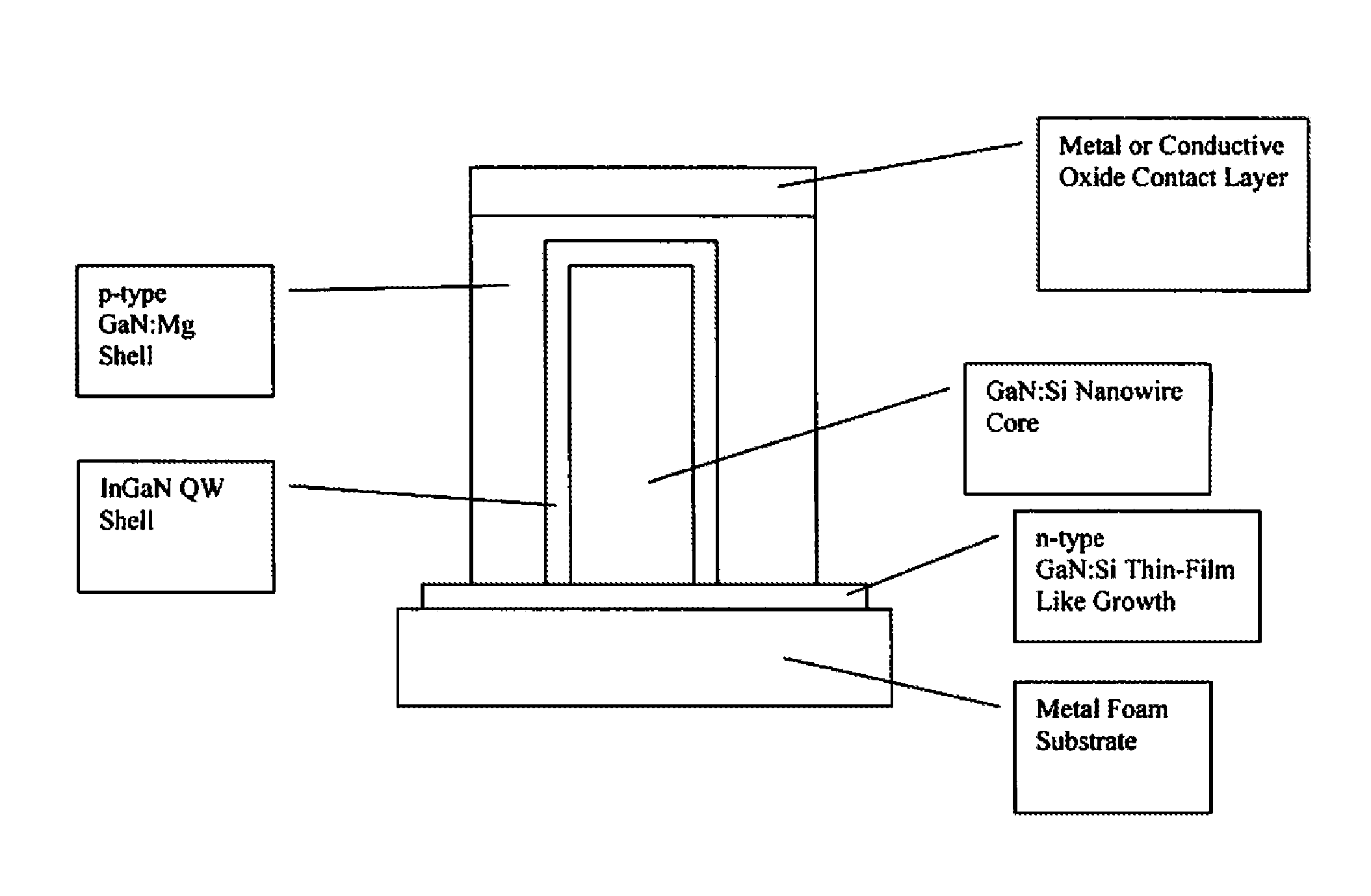Light emitting device on metal foam substrate
a technology of light-emitting devices and metal foam, which is applied in the manufacture of semiconductor/solid-state devices, semiconductor devices, electrical devices, etc., can solve the problems of substrate cost, processing cost limitations, and certain restrictions inherent in thin-film, and achieve the effect of conductive and inexpensiv
- Summary
- Abstract
- Description
- Claims
- Application Information
AI Technical Summary
Benefits of technology
Problems solved by technology
Method used
Image
Examples
Embodiment Construction
[0024]The present invention provides light emitting nanowire diodes on a metal foam substrate for illumination. The design includes: an electrically conductive metal foam or porous metal substrate; one or more multi-layer semiconductor nanowire light emitting diodes formed in contact with the substrate with a continuous pn junction; a metal coating or conductive oxide layer used to provide an electrical contact to the side of the diode junction opposite the metal substrate; and a package or module to protect and provide electrical or optical stimulation to the device in a continuous or modulated manner. As shown in FIG. 1, the nanowires may have horizontal / vertical growth-regimes that combine to produce a nanowire that is tapered so that the bases of adjacent nanowires touch. As shown, in FIG. 2, there may be an initial thin conformal GaN seed layer formed on the metal substrate by ALE, MOCVD, MBE, PLD or similar technique.
[0025]The substrate can be a metal foam, a porous metal, ali...
PUM
| Property | Measurement | Unit |
|---|---|---|
| pore diameters | aaaaa | aaaaa |
| diameter | aaaaa | aaaaa |
| length | aaaaa | aaaaa |
Abstract
Description
Claims
Application Information
 Login to View More
Login to View More - R&D
- Intellectual Property
- Life Sciences
- Materials
- Tech Scout
- Unparalleled Data Quality
- Higher Quality Content
- 60% Fewer Hallucinations
Browse by: Latest US Patents, China's latest patents, Technical Efficacy Thesaurus, Application Domain, Technology Topic, Popular Technical Reports.
© 2025 PatSnap. All rights reserved.Legal|Privacy policy|Modern Slavery Act Transparency Statement|Sitemap|About US| Contact US: help@patsnap.com



